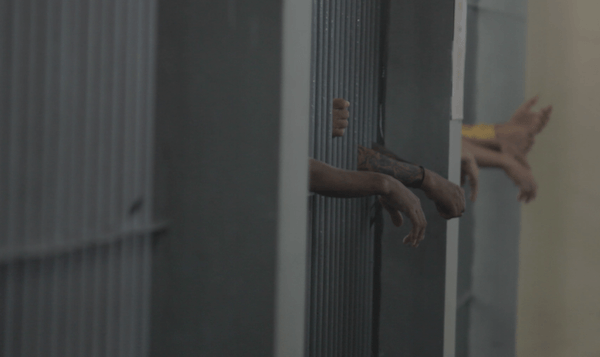SUMMARY
This is AI generated summarization, which may have errors. For context, always refer to the full article.

LAGUNA, Philippines – What is it like to manage and run more than 400 jails scattered across more than 7,100 islands?
Very difficult.
The simple task of getting consistent and accurate information about the problems facing each jail — breakdowns in the water systems, level of overcrowding — often takes months.
The Bureau of Jail Management and Penology (BJMP), charged with prison administration, would have to send engineers to conduct physical inspections and then do the paperwork.
Engineers would have to document their findings by filling out various forms. Information was sent back to the headquarters for appropriate action through email or fax and in some cases, handcarried and then manually encoded at headquarters.
Overcrowding
BJMP data show that on the average, its detention centers are at 380% overcapacity. Among the most congested jails, the overcapacity reaches levels of more than 2,000%.
According to Human Rights Watch (HRW), the Philippines has the highest number of pre-trial detainees in the Southeast Asia Region, a condition that is attributed to a diverse set of factors. (READ: Prison reform: The only unity we need)
“The sources of this injustice are multifold,” wrote Carlos Conde, HRW researcher in the Philippines. “Corrupt and incompetent investigators and prosecutors, a judicial and court system clogged with too many cases, and too few judges to try them. These institutional pathologies result in unjust and prolonged detention.”
Criminal cases pile up faster than they can be tried.
The Philippine Statistics Authority (PSA) reports that lower courts handle more than 1 million cases a year and each judge has to manage an annual caseload of close to 700 cases.
Overstaying
At the Calamba City Jail, there are about BJMP 41 personnel overseeing close to 900 detainees.
Mel* has been in detention since February this year. He does not know when he will get actual facetime with the judge who will hear his case of drug possession. According to the Institute for Criminal Policy Research, pre-trial detainees like Mel make up 64% of the country’s prison population.
About 50% of detainees are charged with a drug-related case, a non-bailable offense.
Every day after her night shift at the factory ends, Mel’s wife, Cory*, visits him, bringing him food and stories about their children. “I don’t want him to ever think that he has been forgotten,” she said.
Under the current justice system, if you are charged with a crime and cannot post bail, you are placed behind bars while waiting for trial.
And that could take years. Many pre-trial detainees spend years in detention before being convicted or released by the courts.
Managing the detention conditions by improving air quality, water and sanitation conditions during this period can make jail time more bearable.
Acting as eyes and ears
The BJMP and the International Committee of the Red Cross (ICRC), which assists national authorities address humanitarian problems in detention centers, have put together a mobile data-collecting platform that acts as the BJMP Headquarters eyes and ears in the jails.
Using a software called Majella, engineers in the BJMP’s regional offices can upload detailed reports about prison conditions, infrastructure, and services into a central web-based platform using tablets or smart phones.
Edilberto Tumolva, an engineer at the Calamba City Jail, uses a handheld digital tape measure to electronically capture cell dimensions. Tumolva mounts the digital tape measure on one side of the wall and it automatically computes for the distance between the two walls.
“Before, we were using an actual tape measure and taking measurements manually,” said Tumolva. “That would be open to a lot of inaccuracies.”
The measurements are uploaded into Majella and used as a basis to analyze amount of indoor living space per inmate, the quality of ventilation, among many other factors that have a direct impact on an inmate’s well-being while detained.
Engineers can also upload photos that show the cisterns, pipes, kitchens or other systems that need repair.
They can work offline and once they have all the data and saved it, they simply need to find a place with WiFi, the regional office or even an Internet café, and upload the data on the shared platform that can be directly accessed by the regional and head offices.
Complex conditions
“Managing 460 jails in a country over thousands of islands is a challenge in particular for BJMP, because they are running with limited resources,” said Marco Albertini Water and Habitat Engineer for the ICRC.
“We know that there is overcrowding but it is interesting to know where overcrowding is more severe. Statistics show that it’s not the same throughout the country. There are regions where it is necessary to focus first.”
“It is interesting to look at overcrowding not only as surface, but as a set of conditions that determine the conditions of life,” added Albertini.
But easing congestion is just the tip of the iceberg. The cost of a sluggish justice system and a bail system that keeps the accused behind bars locked up while waiting for sentencing and trial remains the root cause of the problem.
The poor who cannot afford bail are disproportionately affected.
The PSA points out that the annual food and medicine allowance for each prisoner is estimated at more than P19,000. (READ: Looking into the food system of PH inmates)
Ultimately it is the taxpayers who are made to share the cost of this burden. – Rappler.com
*Name has been changed to protect the identity of the detainee who is still awaiting trial.
Add a comment
How does this make you feel?
There are no comments yet. Add your comment to start the conversation.